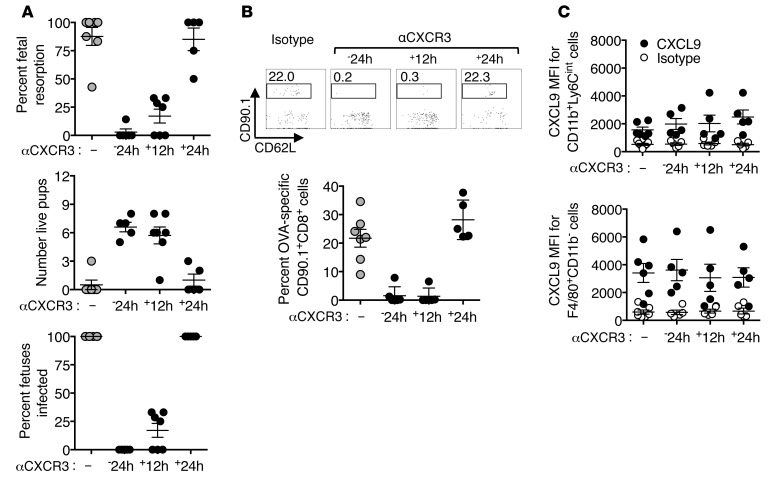Figure 8. CXCR3 blockade initiated before or shortly after virulent L. monocytogenes prenatal infection protects against fetal wastage and mitigates decidual fetal-specific CD8+ T cell accumulation.
(A) Percentage of resorbed fetuses, number of live pups, and frequency of L. monocytogenes recovery from each concepti 5 days after virulent L. monocytogenes (104 CFU) infection initiated midgestation (E11.5) among C57BL/6 female mice bearing allogeneic pregnancies after mating with BALB/c males that were administered anti-CXCR3 antibody (500 μg per mouse) 24 hours before or 12 or 24 hours after infection compared to controls without antibody treatment. (B) Representative FACS plots and composite data showing the percentage of fetal-OVA257–264-specific cells (CD90.1+) among CD8+ T cells recovered from the decidua 3 days after virulent L. monocytogenes (104 CFU) infection initiated midgestation (E11.5) among C57BL/6 female mice bearing allogeneic pregnancies after mating with BALB/c-OVA males that were administered anti-CXCR3 antibody (500 μg per mouse) 24 hours before or 12 or 24 hours after infection compared to controls without antibody treatment. (C) Mean fluorescent intensity after staining with anti-CXCL9 compared with isotype control antibody among neutrophils (CD11b+Ly6Cint) and macrophages (F4/80+ CD11b–) recovered from the decidua 3 days after virulent L. monocytogenes (104 CFU) infection for mice described in B. Each symbol indicates the data from a single mouse, and these results, containing 5–7 mice per group, are representative of 3 independent experiments, each with similar results. Error bars represent mean ± 1 SEM.

